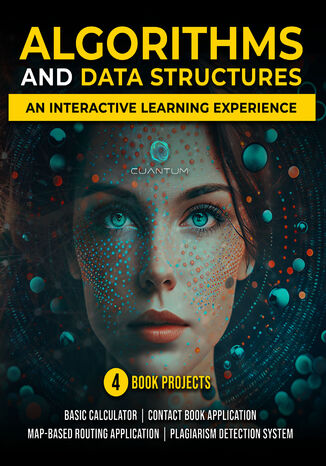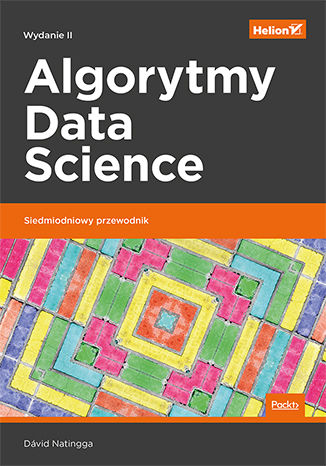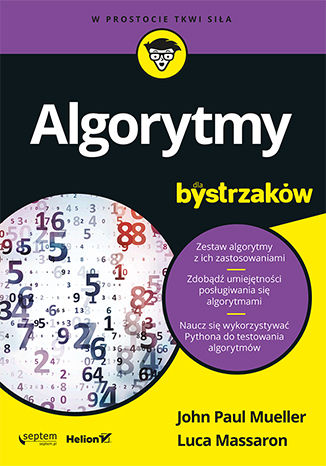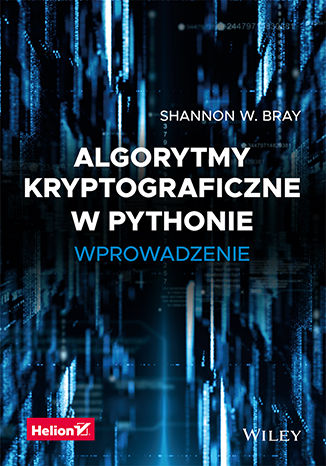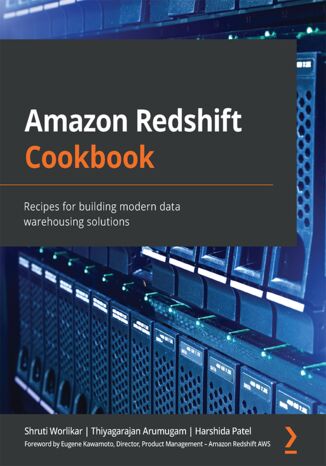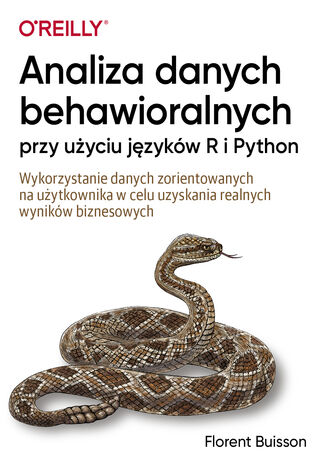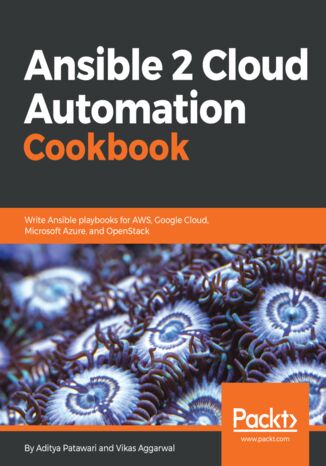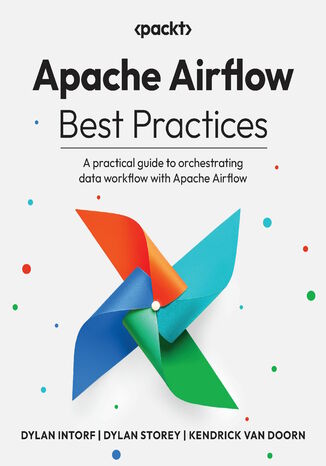Kategorie
-
- Bitcoin
- Bizneswoman
- Coaching
- Controlling
- E-biznes
- Ekonomia
- Finanse
- Giełda i inwestycje
- Kompetencje osobiste
- Komputer w biurze
- Komunikacja i negocjacje
- Mała firma
- Marketing
- Motywacja
- Multimedialne szkolenia
- Nieruchomości
- Perswazja i NLP
- Podatki
- Polityka społeczna
- Poradniki
- Prezentacje
- Przywództwo
- Public Relation
- Raporty, analizy
- Sekret
- Social Media
- Sprzedaż
- Start-up
- Twoja kariera
- Zarządzanie
- Zarządzanie projektami
- Zasoby ludzkie (HR)
-
- Architektura i wnętrza
- BHP
- Biznes i Ekonomia
- Dom i ogród
- E-Biznes
- Ekonomia i finanse
- Ezoteryka
- Finanse
- Finanse osobiste
- Firma
- Fotografia
- Informatyka
- Kadry i płace
- Kobieca
- Komputery, Excel
- Księgowość
- Kultura i literatura
- Naukowe i akademickie
- Ochrona środowiska
- Opiniotwórcze
- Oświata
- Podatki
- Podróże
- Psychologia
- Religia
- Rolnictwo
- Rynek książki i prasy
- Transport i Spedycja
- Zdrowie i uroda
-
- Aplikacje biurowe
- Bazy danych
- Bioinformatyka
- Biznes IT
- CAD/CAM
- Digital Lifestyle
- DTP
- Elektronika
- Fotografia cyfrowa
- Grafika komputerowa
- Gry
- Hacking
- Hardware
- IT w ekonomii
- Pakiety naukowe
- Podręczniki szkolne
- Podstawy komputera
- Programowanie
- Programowanie mobilne
- Serwery internetowe
- Sieci komputerowe
- Start-up
- Systemy operacyjne
- Sztuczna inteligencja
- Technologia dla dzieci
- Webmasterstwo
-
- Antologie
- Ballada
- Biografie i autobiografie
- Dla dorosłych
- Dramat
- Dzienniki, pamiętniki, listy
- Epos, epopeja
- Esej
- Fantastyka i science-fiction
- Felietony
- Fikcja
- Humor, satyra
- Inne
- Klasyczna
- Kryminał
- Literatura faktu
- Literatura piękna
- Mity i legendy
- Nobliści
- Nowele
- Obyczajowa
- Okultyzm i magia
- Opowiadania
- Pamiętniki
- Podróże
- Poemat
- Poezja
- Polityka
- Popularnonaukowa
- Powieść
- Powieść historyczna
- Proza
- Przygodowa
- Publicystyka
- Reportaż
- Romans i literatura obyczajowa
- Sensacja
- Thriller, Horror
- Wywiady i wspomnienia
-
- Archeologia
- Bibliotekoznawstwo
- Filmoznawstwo
- Filologia
- Filologia polska
- Filozofia
- Finanse i bankowość
- Geografia
- Gospodarka
- Handel. Gospodarka światowa
- Historia i archeologia
- Historia sztuki i architektury
- Kulturoznawstwo
- Lingwistyka
- Literaturoznawstwo
- Logistyka
- Matematyka
- Medycyna
- Nauki humanistyczne
- Pedagogika
- Pomoce naukowe
- Popularnonaukowa
- Pozostałe
- Psychologia
- Socjologia
- Teatrologia
- Teologia
- Teorie i nauki ekonomiczne
- Transport i spedycja
- Wychowanie fizyczne
- Zarządzanie i marketing
-
- BHP
- Historia
- Kodeks drogowy. Prawo jazdy
- Nauki prawne
- Ochrona zdrowia
- Ogólne, kompendium wiedzy
- Podręczniki akademickie
- Pozostałe
- Prawo budowlane i lokalowe
- Prawo cywilne
- Prawo finansowe
- Prawo gospodarcze
- Prawo gospodarcze i handlowe
- Prawo karne
- Prawo karne. Przestępstwa karne. Kryminologia
- Prawo międzynarodowe
- Prawo międzynarodowe i zagraniczne
- Prawo ochrony zdrowia
- Prawo oświatowe
- Prawo podatkowe
- Prawo pracy i ubezpieczeń społecznych
- Prawo publiczne, konstytucyjne i administracyjne
- Prawo rodzinne i opiekuńcze
- Prawo rolne
- Prawo socjalne, prawo pracy
- Prawo Unii Europejskiej
- Przemysł
- Rolne i ochrona środowiska
- Słowniki i encyklopedie
- Zamówienia publiczne
- Zarządzanie
-
- Afryka
- Albumy
- Ameryka Południowa
- Ameryka Środkowa i Północna
- Australia, Nowa Zelandia, Oceania
- Austria
- Azja
- Bałkany
- Bliski Wschód
- Bułgaria
- Chiny
- Chorwacja
- Czechy
- Dania
- Egipt
- Estonia
- Europa
- Francja
- Góry
- Grecja
- Hiszpania
- Holandia
- Islandia
- Litwa
- Łotwa
- Mapy, Plany miast, Atlasy
- Miniprzewodniki
- Niemcy
- Norwegia
- Podróże aktywne
- Polska
- Portugalia
- Pozostałe
- Przewodniki po hotelach i restauracjach
- Rosja
- Rumunia
- Słowacja
- Słowenia
- Szwajcaria
- Szwecja
- Świat
- Turcja
- Ukraina
- Węgry
- Wielka Brytania
- Włochy
-
- Filozofie życiowe
- Kompetencje psychospołeczne
- Komunikacja międzyludzka
- Mindfulness
- Ogólne
- Perswazja i NLP
- Psychologia akademicka
- Psychologia duszy i umysłu
- Psychologia pracy
- Relacje i związki
- Rodzicielstwo i psychologia dziecka
- Rozwiązywanie problemów
- Rozwój intelektualny
- Sekret
- Seksualność
- Uwodzenie
- Wygląd i wizerunek
- Życiowe filozofie
-
- Bitcoin
- Bizneswoman
- Coaching
- Controlling
- E-biznes
- Ekonomia
- Finanse
- Giełda i inwestycje
- Kompetencje osobiste
- Komunikacja i negocjacje
- Mała firma
- Marketing
- Motywacja
- Nieruchomości
- Perswazja i NLP
- Podatki
- Polityka społeczna
- Poradniki
- Prezentacje
- Przywództwo
- Public Relation
- Sekret
- Social Media
- Sprzedaż
- Start-up
- Twoja kariera
- Zarządzanie
- Zarządzanie projektami
- Zasoby ludzkie (HR)
-
- Antologie
- Ballada
- Biografie i autobiografie
- Dla dorosłych
- Dramat
- Dzienniki, pamiętniki, listy
- Epos, epopeja
- Esej
- Fantastyka i science-fiction
- Felietony
- Fikcja
- Humor, satyra
- Inne
- Klasyczna
- Kryminał
- Literatura faktu
- Literatura piękna
- Mity i legendy
- Nobliści
- Nowele
- Obyczajowa
- Okultyzm i magia
- Opowiadania
- Pamiętniki
- Podróże
- Poezja
- Polityka
- Popularnonaukowa
- Powieść
- Powieść historyczna
- Proza
- Przygodowa
- Publicystyka
- Reportaż
- Romans i literatura obyczajowa
- Sensacja
- Thriller, Horror
- Wywiady i wspomnienia
-
- Filozofie życiowe
- Komunikacja międzyludzka
- Mindfulness
- Ogólne
- Perswazja i NLP
- Psychologia akademicka
- Psychologia duszy i umysłu
- Psychologia pracy
- Relacje i związki
- Rodzicielstwo i psychologia dziecka
- Rozwiązywanie problemów
- Rozwój intelektualny
- Sekret
- Seksualność
- Uwodzenie
- Wygląd i wizerunek
- Życiowe filozofie
- Ebooki
- Programowanie
- Python
Python
Begin your journey with an introduction to Python and algorithms, laying the groundwork for more complex topics. You will start with the basics of Python programming, ensuring a solid foundation before diving into more advanced and sophisticated concepts. As you progress, you'll explore elementary data containers, gaining an understanding of their role in algorithm development.Midway through the course, you’ll delve into the art of sorting and searching, mastering techniques that are crucial for efficient data handling. You will then venture into hierarchical data structures, such as trees and graphs, which are essential for understanding complex data relationships. By mastering algorithmic techniques, you’ll learn how to implement solutions for a variety of computational challenges.The latter part of the course focuses on advanced topics, including network algorithms, string and pattern deciphering, and advanced computational problems. You'll apply your knowledge through practical case studies and optimizations, bridging the gap between theoretical concepts and real-world applications. This comprehensive approach ensures you are well-prepared to handle any programming challenge with confidence.
Algorytmy Data Science. Siedmiodniowy przewodnik. Wydanie II
Data science jest interdyscyplinarną dziedziną naukową łączącą osiągnięcia uczenia maszynowego, statystyki i eksploracji danych. Umożliwia wydobywanie nowej wiedzy z istniejących danych poprzez stosowanie odpowiednich algorytmów i analizy statystycznej. Stworzono dotąd wiele algorytmów tej kategorii i wciąż powstają nowe. Stanowią one podstawę konstruowania modeli umożliwiających wyodrębnianie określonych informacji z danych odzwierciedlających zjawiska zachodzące w świecie rzeczywistym, pozwalają też na formułowanie prognoz ich przebiegu w przyszłości. Algorytmy data science są postrzegane jako ogromna szansa na zdobycie przewagi konkurencyjnej, a ich znaczenie stale rośnie. Ta książka jest zwięzłym przewodnikiem po algorytmach uczenia maszynowego. Jej cel jest prosty: w ciągu siedmiu dni masz opanować solidne podstawy siedmiu najważniejszych dla uczenia maszynowego algorytmów. Opisom poszczególnych algorytmów towarzyszą przykłady ich implementacji w języku Python, a praktyczne ćwiczenia, które znajdziesz na końcu każdego rozdziału, ułatwią Ci lepsze zrozumienie omawianych zagadnień. Co więcej, dzięki książce nauczysz się właściwie identyfikować problemy z zakresu data science. W konsekwencji dobieranie odpowiednich metod i narzędzi do ich rozwiązywania okaże się dużo łatwiejsze. W tej książce: efektywne implementacje algorytmów uczenia maszynowego w języku Python klasyfikacja danych przy użyciu twierdzenia Bayesa, drzew decyzyjnych i lasów losowych podział danych na klastery za pomocą algorytmu k-średnich stosowanie analizy regresji w parametryzacji modeli przewidywań analiza szeregów czasowych pod kątem trendów i sezonowości danych Algorytmy data science: poznaj, zrozum, zastosuj!
John Paul Mueller, Luca Massaron
Zestaw algorytmy z ich zastosowaniami Zdobądź umiejętności posługiwania się algorytmami Naucz się wykorzystywać Pythona do testowania algorytmów Myśl za pomocą algorytmów Ten jasny i przystępny przewodnik pokazuje, w jaki sposób algorytmy wpływają na nasze codzienne życie - od interakcji online po osobistą komunikację. Są również niezwykle ważne, jeśli chodzi o podejmowanie różnego rodzaju decyzji. Jeśli chcesz wiedzieć, jak korzystać z procedur rozwiązywania problemów w prawdziwym świecie, książka Algorytmy dla bystrzaków zagwarantuje Ci doskonałe wprowadzenie do tej fascynującej, wszechobecnej dziedziny. W książce: Operacje na danych Projektowanie algorytmów Podstawy teorii grafów Zarządzanie danymi o dużej objętości Upraszczanie złożonych algorytmów
Algorytmy kryptograficzne w Pythonie. Wprowadzenie
Dzięki kryptografii możemy w dużym stopniu zabezpieczyć swoje dane. Z szyfrowaną komunikacją wiążą się jednak kontrowersje i sprzeczności interesów. Przestępcy, ale również rządy, policja i służby wywiadowcze dążą do uzyskania możliwości wglądu we wszystkie formy komunikacji. Świat toczy wojnę o to, co można zaszyfrować, co powinno być zaszyfrowane i kto powinien dysponować kluczem pozwalającym odczytać zaszyfrowane wiadomości należące do innej osoby. W tej sytuacji zrozumienie, czym jest szyfrowanie, jak je stosować i jak się upewniać co do autentyczności i poufności otrzymywanych danych, staje się niezwykle ważne. Ta książka jest przystępnym wprowadzeniem do kryptografii i bibliotek kryptograficznych Pythona. Omówiono tu podstawowe koncepcje z tej dziedziny, najważniejsze algorytmy i niezbędny zakres podstaw matematycznych: liczby pierwsze, teorię grup czy generatory liczb pseudolosowych. Wyjaśniono, czym są poufność, autentyczność i integralność wiadomości. Zaprezentowano najciekawsze biblioteki kryptograficzne Pythona i dokładnie pokazano, w jaki sposób można je wykorzystywać we własnych implementacjach. Wiele z prezentowanych koncepcji, między innymi kryptografia klucza publicznego i implementacja kryptografii krzywych eliptycznych, zostało przedstawionych w praktyce, za pomocą kodu Pythona, tak aby można było wymieniać dane w bardzo bezpiecznym formacie przez niezabezpieczony kanał. W książce: podstawy Pythona i kryptografii protokoły kryptograficzne i matematyka kryptograficzna kryptoanaliza za pomocą kodu Pythona kryptografia wizualna: biblioteki, algorytmy, tryby kodowania integralność wiadomości tworzenie rozwiązań kryptograficznych w Pythonie Masz coś do ukrycia? Zaszyfruj to w Pythonie!
Amazon Redshift Cookbook. Recipes for building modern data warehousing solutions
Shruti Worlikar, Thiyagarajan Arumugam, Harshida Patel, Eugene Kawamoto
Amazon Redshift is a fully managed, petabyte-scale AWS cloud data warehousing service. It enables you to build new data warehouse workloads on AWS and migrate on-premises traditional data warehousing platforms to Redshift.This book on Amazon Redshift starts by focusing on Redshift architecture, showing you how to perform database administration tasks on Redshift. You'll then learn how to optimize your data warehouse to quickly execute complex analytic queries against very large datasets. Because of the massive amount of data involved in data warehousing, designing your database for analytical processing lets you take full advantage of Redshift's columnar architecture and managed services. As you advance, you’ll discover how to deploy fully automated and highly scalable extract, transform, and load (ETL) processes, which help minimize the operational efforts that you have to invest in managing regular ETL pipelines and ensure the timely and accurate refreshing of your data warehouse. Finally, you'll gain a clear understanding of Redshift use cases, data ingestion, data management, security, and scaling so that you can build a scalable data warehouse platform.By the end of this Redshift book, you'll be able to implement a Redshift-based data analytics solution and have understood the best practice solutions to commonly faced problems.
Analiza danych behawioralnych przy użyciu języków R i Python
Wykorzystanie danych zorientowanych na użytkownika w celu uzyskania realnych wyników biznesowych Dzięki tej książce Czytelnik będzie mógł wykorzystać w swojej firmie pełną moc danych behawioralnych używając w tym celu wyspecjalizowanych narzędzi. Algorytmy często stosowane w danologii, a także programy służące do analizy predykcyjnej traktują jak zwykłe informacje dane behawioralne wygenerowane przez użytkowników, takie jak kliknięcia na stronie internetowej czy zakupy w supermarkecie. Ten praktyczny przewodnik zawiera opisy skutecznych metod, zaprojektowanych specjalnie w celu przeprowadzania analiz danych behawioralnych. Zaawansowana architektura umożliwiająca wykonywanie eksperymentów pomaga w pełni wykorzystać testy A/B. Diagramy przyczynowe pozwalają poznać przyczyny zachowań nawet w przypadku, gdy nie można przeprowadzać eksperymentów. Ta praktyczna książka, napisana przystępnym stylem i przeznaczona dla osób zajmujących się danymi, analityków biznesowych oraz behawiorystów, zawiera kompletne przykłady, a także ćwiczenia wykorzystujące języki R i Python, pozwalające od razu uzyskać lepszy wgląd w dane. Zagadnienia przeanalizowane w książce: - Poznanie specyfiki danych behawioralnych. - Przedstawienie różnic pomiędzy pomiarami a prognozami. - Wyjaśnienie, jak można oczyścić i przygotować dane behawioralne. - Zaprojektowanie i przeanalizowanie eksperymentów umożliwiających podejmowanie optymalnych decyzji biznesowych. - Wykorzystanie danych behawioralnych w celu zrozumienia i określenia przyczyny oraz skutku. - Zaprezentowanie kompleksowej metody pozwalającej na uzyskanie przejrzystego podziału klientów na grupy. "Ta książka jest wyjątkowa, ponieważ rozpoczyna się od przedstawienia pytań i problemów, a także wykorzystuje w postaci prawdziwych narzędzi odpowiednie techniki i języki programowania. Dzięki temu Czytelnicy poznają, jak można rozwiązywać niezwykle ważne i trudne zagadnienia. Czas poświęcony na jej przeczytanie będzie czystą inwestycją." -Eric Weber Kierownik Działu Eksperymentów, Yelp Florent Buisson jest ekonomistą behawioralnym z 10-letnim doświadczeniem związanych z biznesem, analityką i naukami behawioralnymi. W firmie ubezpieczeniowej Allstate założył zespół specjalizujący się w naukach behawioralnych i pełnił funkcję jego szefa przez cztery lata. Publikował artykuły naukowe w czasopismach takich jak recenzowany Journal of Real Estate Research. Posiada tytuł magistra ekonometrii oraz doktorat z ekonomii behawioralnej, uzyskany na uniwersytecie Sorbona w Paryżu.
Aditya Patawari, Vikas Aggarwal
Ansible has a large collection of inbuilt modules to manage various cloud resources. The book begins with the concepts needed to safeguard your credentials and explain how you interact with cloud providers to manage resources. Each chapter begins with an introduction and prerequisites to use the right modules to manage a given cloud provider. Learn about Amazon Web Services, Google Cloud, Microsoft Azure, and other providers. Each chapter shows you how to create basic computing resources, which you can then use to deploy an application. Finally, you will be able to deploy a sample application to demonstrate various usage patterns and utilities of resources.
Apache Airflow Best Practices. A practical guide to orchestrating data workflow with Apache Airflow
Dylan Intorf, Dylan Storey, Kendrick van Doorn
Data professionals face the challenge of managing complex data pipelines, orchestrating workflows across diverse systems, and ensuring scalable, reliable data processing. This definitive guide to mastering Apache Airflow, written by experts in engineering, data strategy, and problem-solving across tech, financial, and life sciences industries, is your key to overcoming these challenges. Covering everything from Airflow fundamentals to advanced topics such as custom plugin development, multi-tenancy, and cloud deployment, this book provides a structured approach to workflow orchestration. You’ll start with an introduction to data orchestration and Apache Airflow 2.x updates, followed by DAG authoring, managing Airflow components, and connecting to external data sources. Through real-world use cases, you’ll learn how to implement ETL pipelines and orchestrate ML workflows in your environment, and scale Airflow for high availability and performance. You’ll also learn how to deploy Airflow in cloud environments, tackle operational considerations for scaling, and apply best practices for CI/CD and monitoring.By the end of this book, you’ll be proficient in operating and using Apache Airflow, authoring high-quality workflows in Python, and making informed decisions crucial for production-ready Airflow implementations.

